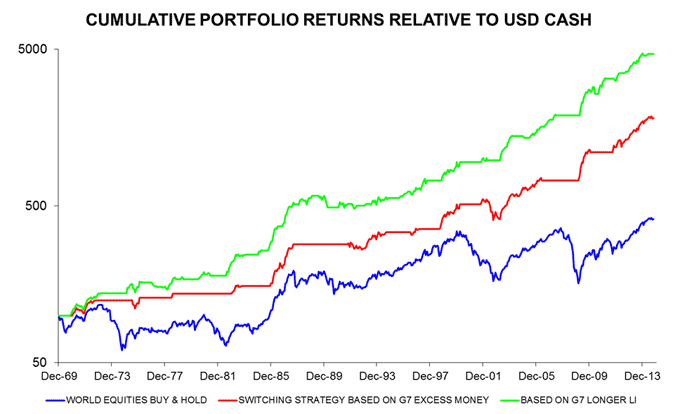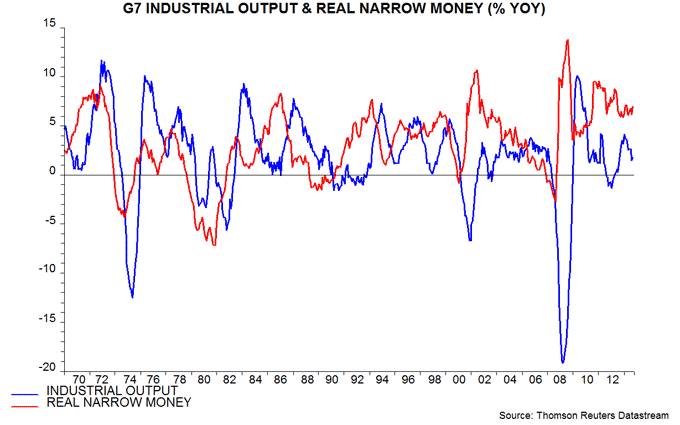Equities versus cash investment rules: an update
Previous posts have described two simple investment rules for switching between global equities and US dollar cash. As detailed below, one of the rules is positive on equities while the other prefers cash.
The first rule holds equities or cash depending on whether G7 annual real narrow money supply expansion is higher or lower than industrial output growth. A faster rise in money holdings than output suggests that investors are about to deploy cash in asset markets, pushing up prices. Conversely, a slowdown of money relative to output may signal a deteriorating liquidity backdrop for equities. An investor following this rule over the last 30 plus years would have captured much of the rise in equities while largely avoiding bear markets. The rule outperformed a strategy of buy and hold by 3.5% per annum (pa) between 1969 and 2013 – see first chart*.
The second rule switches between equities and cash depending on whether the G7 longer leading indicator followed here is above or below its long-run average. The indicator is designed to predict turning points in industrial output growth: a rise through the average signals economic acceleration; a fall below it warns of a slowdown. The backtest performance of the rule is superior to that of the excess money rule; it captures more of the rise in equities and avoids a larger proportion of the bear phases. The rule outperformed buy and hold by 6.0% pa over 1969-2013 – first chart.
These returns are hypothetical because they are based on currently-available data. The excess money results, however, may be realistic, since annual real money and industrial output growth could have been calculated in real time and subsequent data revisions would probably have made little difference to the timing of cross-over signals. By contrast, the leading indicator series incorporates changes over the years in the construction and constituents of the OECD’s country leading indices. Data revisions to these indices, moreover, are sometimes significant. The historical return of the leading indicator rule, therefore, is unlikely to have been achievable in practice.
G7 annual real narrow money expansion has been above industrial output growth since 2011 and the current gap is the widest since August 2013 – second chart. The first rule, therefore continues to favour equities.
The G7 longer leading indicator, by contrast, has been below its long-run average since April, resulting in the second rule being in cash since June** – third chart. The indicator, however, recovered in September, suggesting that the trend is turning.
The rules, it should be noted, are intended to capture the bulk of gains during market upswings while limiting losses during downswings – they rarely signal the exact top of a bull run or bottom of a bear market.
*A six-month lag is applied before buying equities after a positive cross-over.
**Allowing for the release lag.




Reader Comments